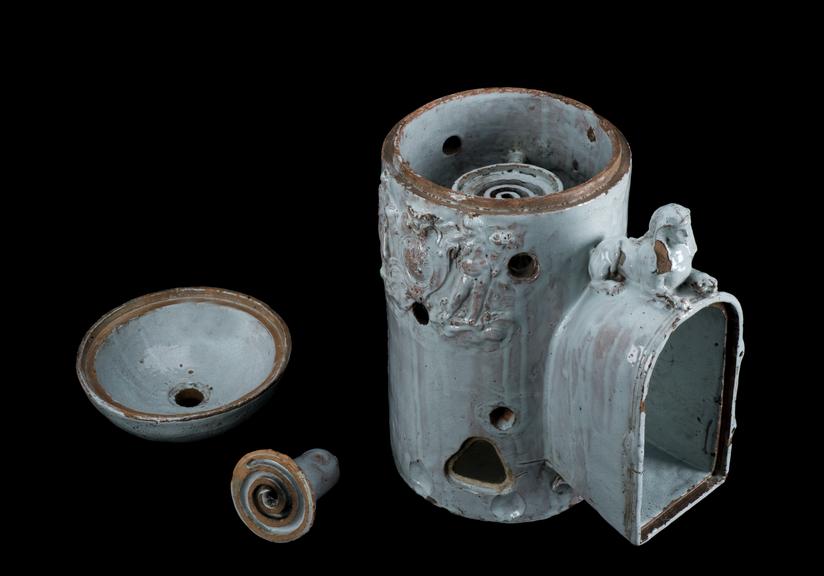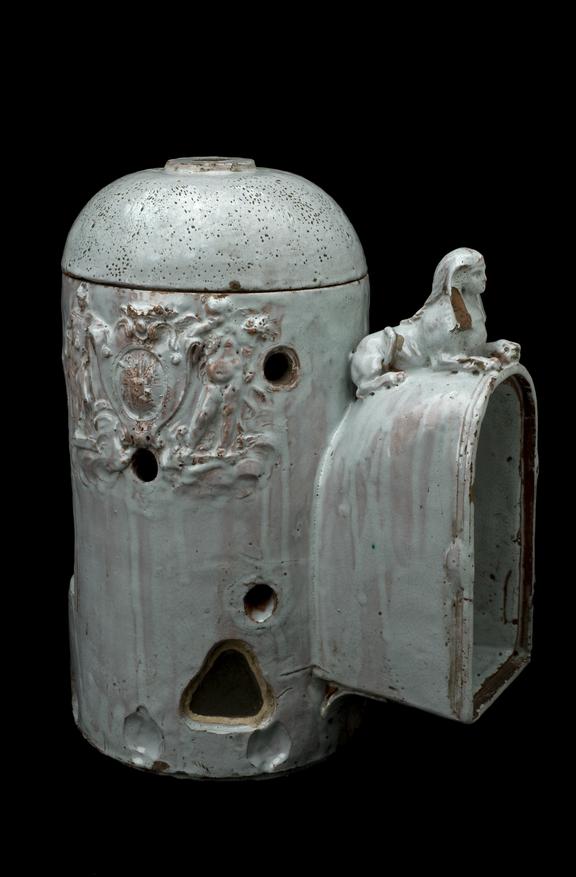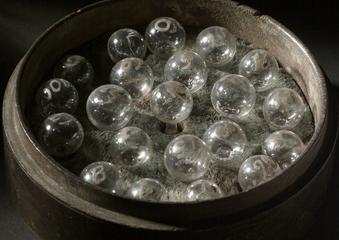




Alchemist's digesting furnace, or anthanot, stoneware, German, 1501-1700
Furnaces were used in the alchemists’ search for the elusive philosopher’s stone – which promised to turn any metal into gold – and the ‘elixir of life’, which promised immortality. Even though we may laugh at these quests, many chemical processes were developed during the fruitless search, including distillation, solution and sublimation. Fire and heat was the chief agent in these processes and close attention was paid to the design and construction of furnaces. This one was designed to maintain an equal heat throughout.
The coat of arms moulded on the side is that of the Villevault family from 1501-1700. It is thought that they commissioned this furnace. The furnace may be French or German in origin. A moulded sphinx, an ancient mythical beast with the head of a woman and the body of a lion, sits on top of the fire place.
Details
- Category:
- Laboratory Medicine
- Collection:
- Sir Henry Wellcome's Museum Collection
- Object Number:
- A634411
- Materials:
- stoneware (grey-glaze)
- Measurements:
-
overall: 445 mm x 340 mm 220 mm,
base: 230 mm,
- type:
- athanor
- credit:
- Sotheby's




